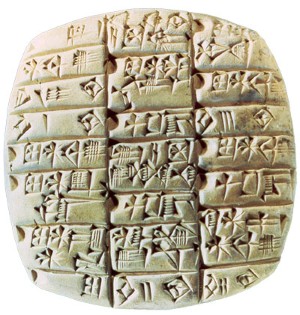The Mathematics of Egypt, Mesopotamia, China, India, and Islam: A Source Book
Edited by:- Victor J. Katz
Mathematics was an important part of many ancient cultures, not just the Greek. These peoples were also at the forefront of notable discoveries, as recorded in The Mathematics of Egypt, Mesopotamia, China, India, and Islam.
This pioneering work provides English translations of mathematical texts from each of these regions and cultures, and a better understanding of their contributions to mathematics. There are nuggets of information difficult to find elsewhere. The use of non-mathematical sources, particularly letters and administrative documents from Egypt and Mesopotamia, reveals the practical applications of mathematics and the scribes who composed and used the documents.
Each chapter is devoted to one region and presented by a well-known scholar — Annette Imhausen for Egypt, Eleanor Robson for Mesopotamia, Joseph Dauben for China, Kim Plofker for India and J. Lennart Berggren for the Islamic world. Each author examines the content and impact of primary mathematical sources on the individual cultures. Chapters are roughly structured so that a selection of texts and commentaries follow an introduction, and end with a list of sources and secondary references.
Dauben's study of Chinese mathematics is notable for its length (roughly 200 pages) and clear, comprehensive coverage of the subject. It offers some new and surprising information, such as the recent discovery of the oldest extant text Suan Shu Shu (or 'Book of Numbers and Computation'). This dates to around 200 BC and has led to a rethinking of the origins of Chinese mathematics.
Beggren's Islamic mathematics rigorously surveys the sources. It contains an interesting excerpt from al-Kuhi, discussing why and how one should learn mathematics and how to 'prove' results. Both Dauben and Beggren's contributions call into question views expressed by some historians on the role of proofs in non-Western mathematics, particularly in Chinese mathematics.

This brings us to Indian mathematics. Plofker includes Mahavira's (from about 850 AD) paean to the art of calculation in Ganitasarasangraha ('Compendium of the Essence of Mathematics'). The period covered is as vast as that of Chinese mathematics, from Vedic Sulbasutras (800–600 BC) to Kerala mathematics (1350–1600 AD), and Plofker uses excerpts from earlier translations as well as from a forthcoming translation of the Kerala text of Kriyakramakari ('Operational Techniques') of Sankara Variyar. The problem with fitting such a broad sweep into a single chapter is that excerpts and commentaries have to be tailored, or left out. This is particularly true of Kerala mathematics, where the seminal text in Malayalam, the Yuktibhasa ('An Exposition of the Rationale'), is not referred to, even though an English translation is now available.
Robson's chapter on Mesopotamian mathematics contains her own translation of some 60 tablets and an exhaustive discussion of this historical and social context. Example is piled upon example of Babylonian mathematics, some no different from those before. Robson's contribution highlights the issue of what this book is for: is it a conventional source book of translations, or a taster for the curious?
This dichotomy becomes more evident in Imhausen's chapter on Egypt. Imhausen points to the limited availability of sources and lack of significant discoveries over the past 70 years. She makes use of literary and administrative documents that, apart from their mathematical import, provide a useful backdrop to the social and economic concerns of the day. I searched in vain for one of the iconic calculations in Egyptian mathematics (problem 79 in the Rhind papyrus), which is a table listing numbers of houses, cats, mice, wheat and so on, in increasing powers of seven and showing how the sum of this geometrical series can be obtained. Indeed, there are only a few examples of calculation (without an explicit algorithmic basis) and visualization (only two diagrams out of about 15 in the original papyri).
There are a few misprints and verbal infelicities. Maps to accompany each chapter would have been helpful, as would a more comprehensive introduction and an expanded index. All the same, this book is an essential resource for anyone wishing to know more about how the mathematics of the different regions influenced and shaped the development of world mathematics.
Author information
Authors and Affiliations
Additional information
New science-art award Entries are now being accepted for the new Niche Prize, awarded by the Royal Institution of Great Britain and Nature. The most original, arresting image or installation conveying a scientific idea in an inspiring, beautiful and artistic way will win the honour of being on prominent display for a year when the Royal Institution reopens next spring following a £20 million (US$41 million) refurbishment. Judges include Susan Greenfield, director of the Royal Institution, Philip Campbell, editor-in-chief of Nature and Lady Ritblat. Prizewinners will be part of a key moment in the Royal Institution's 208-year history of celebrating science. The closing date for entries is 22 February 2008. For guidelines and an entry form, see http://www.rigb.org. To discuss this competition and other science and arts collaborations, see http://network.nature.com/forum/sciart.
Rights and permissions
About this article
Cite this article
Joseph, G. Multicultural legacy. Nature 450, 1163–1164 (2007). https://doi.org/10.1038/4501163b
Published:
Issue Date:
DOI: https://doi.org/10.1038/4501163b
